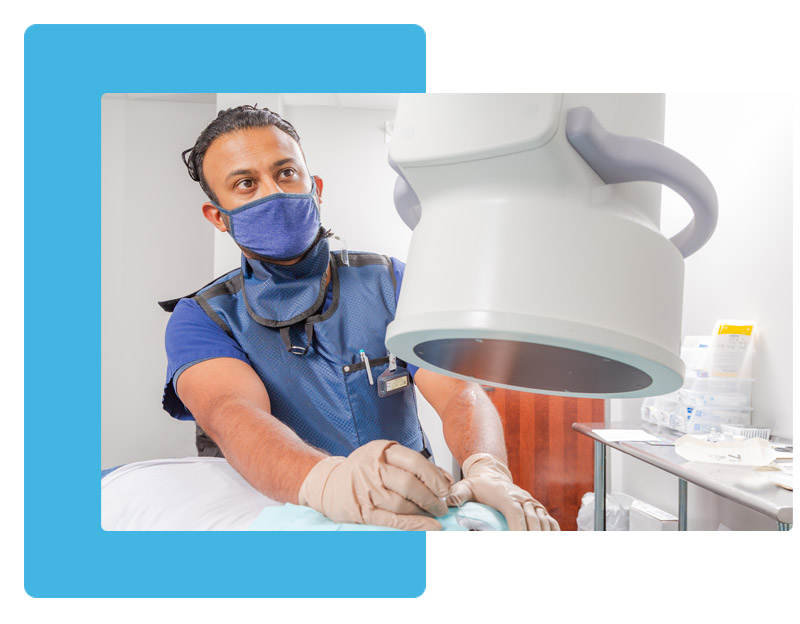

A lumbar fusion is a surgical procedure that is performed in the area of the lower back known as the lumbar region. During a lumbar fusion, bone and disc material is removed to take pressure off your nerves (decompression). The bone removed during the decompression is then used as a graft for the fusion. Screws and rods are used to stabilize the spine while the treated area heals and fusion occurs. The goal of the procedure is to restore spinal stability.

A lumbar fusion is a surgical procedure that is performed in the area of the lower back known as the lumbar region. During a lumbar fusion, bone and disc material is removed to take pressure off your nerves (decompression). The bone removed during the decompression is then used as graft for the fusion. Screws and rods are used to stabilize the spine while the treated area heals and fusion occurs. The goal of the procedure is to restore spinal stability.
The compassionate team at Anchor Spine and Joint consists of highly-trained and qualified Doctors
Pain does not have to interfere with the way you live your life. Discover our conservative and interventional treatments that have a proven track record of faster recovery times from pain syndromes.
We’re glad you found us! Please fill out the form below if you’re interested in scheduling an appointment. We will contact you as soon as possible.

Our anesthesia team will go over any and all questions you may have regarding anesthesia prior to your surgery. After entering the operating room, you will be administered anesthesia to sedate you. Generally, the procedure involves the following:

After entering the operating room, you will be administered anesthesia to put you to sleep. The anesthesia team will go over all questions you may have regarding anesthesia prior to your surgery. Generally, the procedure involves the following:
When you wake up, you will be in the recovery room (PACU). The nurses will monitor your vitals and provide medications to control any pain you are experiencing. You may or may not have a drain located at the surgical site (instructions for emptying the drain/removal will be provided via the nursing staff). If you wake up with a drain, do not change the dressing until the drain is removed. You will be given a post-operative appointment to have your drain removed in the office.
You will be up and walking a few hours after surgery to help reduce the risk of blood clots. Walk as much as tolerated and work up to walking a mile per day.
Once home, take care of your incision site and protect your back by returning to your daily activities slowly.
Restrictions include limiting bending and twisting, and no lifting over 10-15 lbs. If given a back brace, wear it when ambulating.
Make sure to call your doctor and make any necessary follow-up appointments.
“Dr. Patel and Dr. Rodrigo are compassionate and highly qualified physicians who have helped me tremendously with my injury. I am very grateful to have found them. Their staff is also very helpful and welcoming. Highly recommended if you need pain management!”
– Joshua K.
“Wonderful,friendly, kind staff. Always goes the extra mile. Always willing and eager to help when needed. Everyone in office is amazing. From the front office to the nurses and doctors and referral coordinator and office manager.”
– Traci G.
“Dr. Rodrigo is the best at his profession. My husband who is a Marine/Army vet was addicted to opioids for years becasue of his back injury and now is able to do small things without so much pain. Thank you so much guys. To those who complain about the wait… it is worth every second!!!”
– Joan B.
Office Phone : (813) 859-7246
Fax: (813) 280-4855
Office: admin@asjclinic.com
Intake: intake@asjclinic.com
Medical Records: records@asjclinic.com
Hours: Mon-Fri 8:00am – 5:00pm
© 2025 Anchor Spine and Joint | All Rights Reserved. | Privacy Policy | Powered by Affordable Digital Marketing